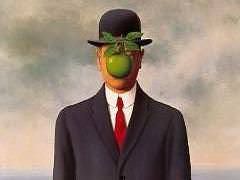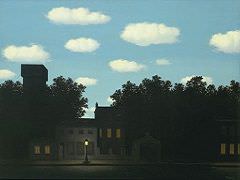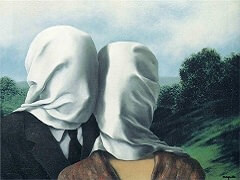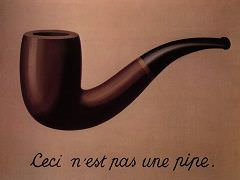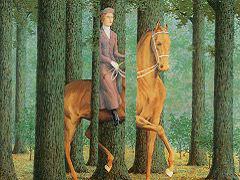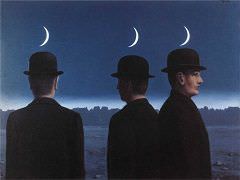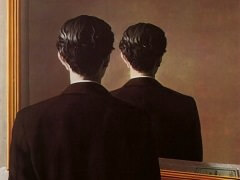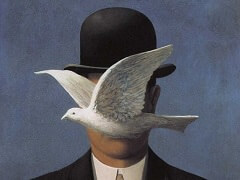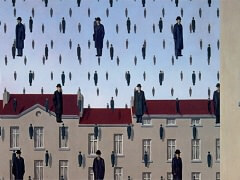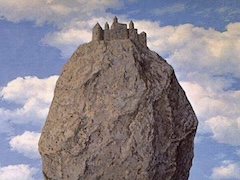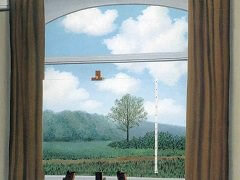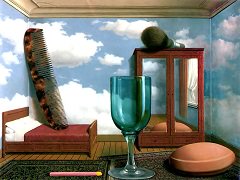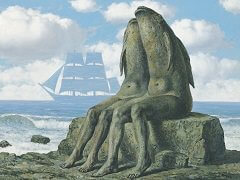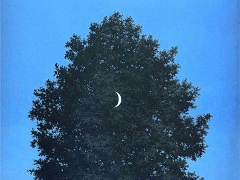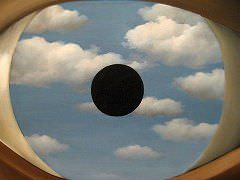The Human Condition II, 1935 by Rene Magritte
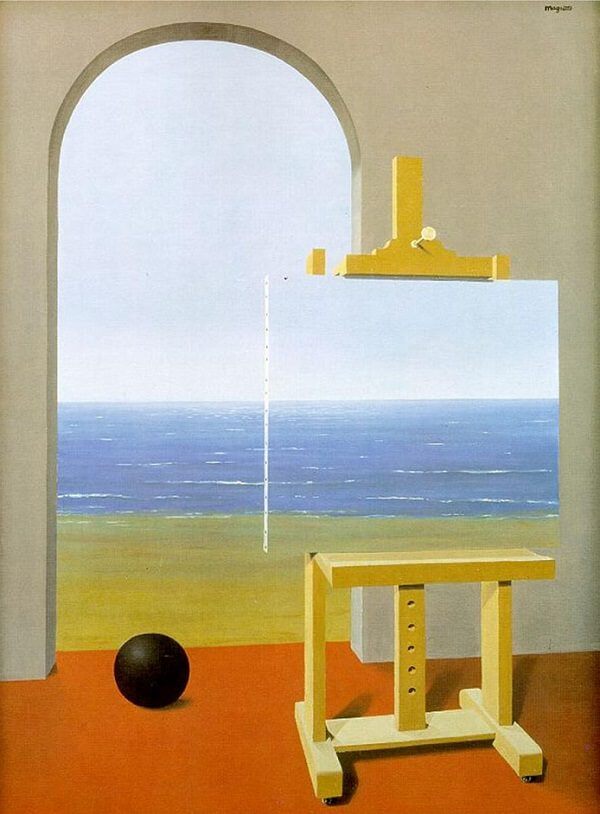
The painting within a painting has a long tradition, which Magritte restored and in a certain sense brought to an end by making us aware of indoor and outdoor spaces, which meet in his paintings. He himself put it in this way:
We see it [the world] as being outside ourselves, although it is only a mental representation of it that we experience inside ourselves. In the same way we sometimes situate in the past a thing which is happening in the present. Time and space thus lose that unrefined meaning which is the only one everyday experience takes into account."
To the theme of the painting within a painting Magritte adds that of the window, placing it in the forefront. For him the window, which had played a role in painting since such German Romantics as Caspar David Friedrich, up to Heri Matisse, had the significance of the eye in the body - which is the house, and from which one observes and experiences the world.
Although Magritte rarely gave us a complete landscape or figure, he almost always depicted a balustrade, a frame, a section of a wall, a windowsill, as though he required a support to protect him from becoming giddy. Magritte is always indoors, and from this vantage point he looks out into the unknown, into space and into life outside, at the same time listening to it. He is the "curtain man." Stripped of all support and logic that is usually provided by the windows and rooms which they serve, Magritte's curtains are the final relics, like the balustrades, like the window and door frames, which provide a link with the interior.
Another peculiar feature is the manner in which Magritte makes the sea seem real on the canvas and yet at the same time confers a transparency to it which exists only in the mind, for the sea on the canvas conceals the sea outside and beyond. From the purely technical and abstract viewpoint, the thin white vertical stroke representing the edge of the canvas is exceptionally finely balanced against the horizontal lines of the sea, the waves, and the boundaries of the floor in the room. The dark sphere forms the center, despite the fact that it is placed left and below the actual center; it is formally related to the arch of the door and the delicate screw on the painter's easel.

